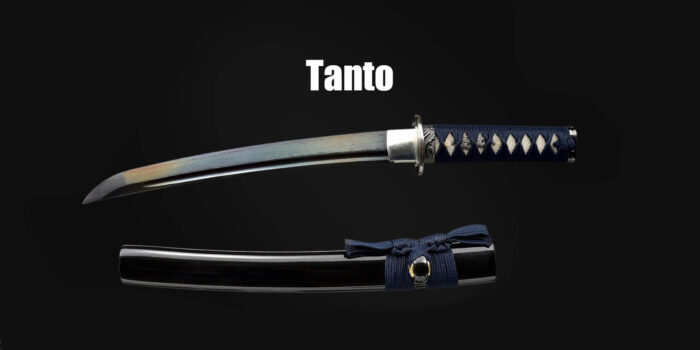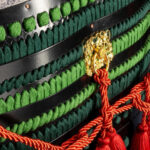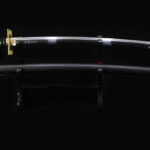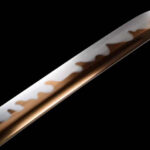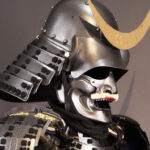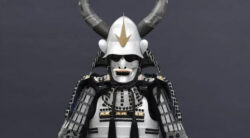Mastering the Tanto: How to Use This Short Real Katana Blade
When discussing how to use a real katana, most people immediately picture the iconic long-bladed traditional katana. However, among the various sword names in Japanese weaponry, the Tanto (短刀) stands out as a compact, deadly, and culturally rich blade. Though small in size, this realistic katana played a major role in samurai life — from close-quarter combat to spiritual rituals. In this article, we explore how to wield a Tanto, break down its anatomy, uncover its cultural symbolism, and examine why this short sword remains a favorite in collections and martial arts training.
1. What Is a Tanto? A Key Player in the Types of Samurai Swords
The Tanto originated during Japan’s Heian period and is often included in the famous trio of samurai weapons:
Katana – The primary long sword used in battle
Wakizashi – A mid-length sidearm, usually worn with the katana
Tanto – A short dagger used for defense, ceremony, and honor
With a blade typically between 15–30 cm, the Tanto is the shortest among the classic types of samurai swords, designed for concealment and precision thrusts. Despite its size, it carried immense responsibility, often worn as a last-resort weapon or even as a noble accessory.
2. Structure of a Tanto — Understanding the Small Parts of Swords
The craftsmanship of the Tanto mirrors that of larger blades. When breaking down the parts of swords, the following components are key:
Blade (Ha): Can be straight or slightly curved, often featuring decorative hamon patterns
Handle of a sword (Tsuka): Typically wrapped in ray skin and cord, offering both grip and aesthetic
Tsuba (Guard): Smaller than those on full-sized katanas, but frequently engraved with clan symbols or floral designs
Saya (Scabbard): Carefully lacquered, sometimes with intricate inlays
A well-crafted Tanto reflects the skills of master swordsmiths. In many custom sword shops, Tanto options offer opportunities for designing swords with personal touches — colors, blade patterns, and family crests.
3. How to Use a Tanto — Techniques for Combat and Defense
While the Tanto may not be suited for wide slashing like a traditional katana, it excels in speed, concealment, and thrusting. Here are four tactical approaches used by samurai warriors and modern martial artists:
1. Quick Draw and Concealment
The Tanto was often hidden in:
Sleeves or under armor
Sashes (obi)
Specialized compartments
Fast-draw techniques, often taught in Iaijutsu and self-defense systems, allow practitioners to strike in a fraction of a second. Many anime swords even replicate this stealth-based use, emphasizing surprise and speed.
2. Precision Thrusting Over Slashing
Due to its short blade, the Tanto is optimized for:
Thrusting into vital soft areas (neck, abdomen, underarm)
Attacks during grappling
Close-range assassination or defense in confined areas
This makes it ideal for home defense simulations or stealth-based martial arts systems.
3. Integration with Grappling Techniques
Samurai trained in jujutsu would often combine sword and body movement. Common tactics include:
Drawing the Tanto mid-grapple
Using the pommel or sword pommel to strike pressure points
Maneuvering the blade with knees or elbows when arms are restrained
These methods remain popular in modern martial arts using safe wooden or rubber replicas of Tanto.
4. Ceremonial and Spiritual Use
The Tanto wasn’t just a battlefield tool. It also held cultural importance:
Seppuku (ritual suicide): The Tanto was the blade used in honorable suicide, symbolizing redemption and loyalty
Kaiken: A small Tanto carried by noblewomen for self-protection and as a symbol of chastity and honor
Family heirloom: Passed down across generations as a symbol of lineage and samurai spirit
These roles show how Tanto bridges both martial practicality and deep-rooted tradition.
4. Female Warriors and the Tanto — More Than a Weapon
While the naginata is often associated with female samurai, the Tanto was a discreet yet powerful sidearm. Samurai wives and noblewomen carried the Kaiken not just as a weapon, but as a symbol of dignity. It complemented feminine roles in a warrior society and was often included in samurai clothing or marriage gifts.
5. Forging a Tanto — A Miniature Masterpiece
Just like forging a full-sized real katana, the process for making a Tanto is labor-intensive:
Material: High-carbon steel (like Tamahagane or folded steel)
Clay tempering: Produces a visible hamon and differential hardness
Polishing: Multiple stages of hand-polishing reveal the beauty and sharpness
The Tanto represents the essence of how katanas are made, compressed into a compact form — a true microcosm of Japanese swordmaking.
6. Modern Use and Collectability
Today, Tanto blades are prized for their:
Practicality in self-defense training
Elegance and compact beauty as collector’s items
Accessibility for beginners learning basic sword techniques, including drawing, footwork, and cutting angles
Whether you’re practicing with a steel blade or a custom sword replica, the Tanto remains a gateway into the world of Japanese blades.
7. Comparison Chart — Tanto vs. Other Traditional Weapons
Weapon Name Combat Range Portability Attack Style Cultural Symbolism
Tanto Close ★★★★★ Thrusting Loyalty, Honor, Dignity
Katana Mid-range ★★★☆☆ Slashing Warrior Spirit, Code of Bushido
Naginata Long ★★☆☆☆ Sweeping + Defense Female Samurai, Home Protection
Yari (Spear) Longest ★☆☆☆☆ Thrust + Reach Military Combat
Conclusion: The Power and Symbolism of the Tanto
The Tanto may be small, but it carries incredible weight — both literally and culturally. As a realistic katana type, it combines function, elegance, and heritage. Whether you’re designing swords for collection, looking for a custom sword, or studying the full spectrum of parts of swords, the Tanto deserves a central place.
If you’re searching for your first blade or adding a new dimension to your swordsmanship, this short but powerful weapon reveals the core of the samurai spirit — focused, disciplined, and enduring.
Forged Japanese Tanto Sword Short Sword Mini Katana Blue Blade Folded Steel Iron Tsuba Full Tang Sharp
